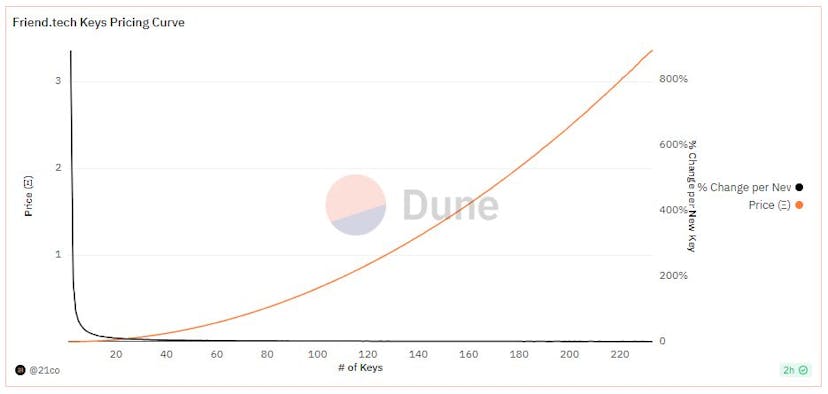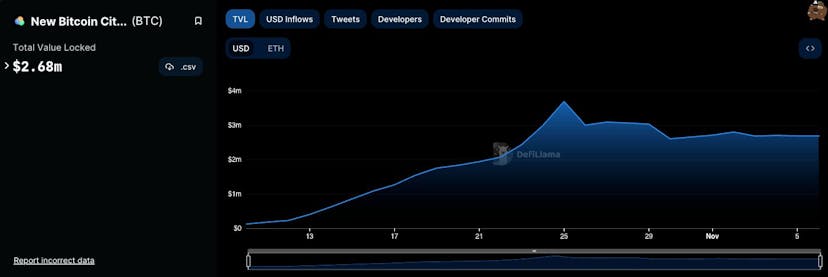With the pandemic keeping people indoors through 2020 and 2021, social platforms across the globe experienced a massive boost in activity. TikTok added over 700 million new users, and YouTube advertising revenue doubled between Q1 2020 and Q4 2021.
This increase sparked a big shift when it came to content creation. People of all ages began to flock towards monetizing their skills, talents or even their daily lives through social platforms, with many able to turn content creation into a full-time career.
However, certain thresholds must be met for a creator to be able to monetize, and a majority of this income is generated via volatile ad revenue controlled by the parent platform.
By utilizing elements of DeFi through blockchain technology, Social-Fi platforms allow anyone to monetize themselves through peer-to-peer transactions, meaning the value exchange is directly between creator and consumer.
Fusing social media and DeFi creates an open-ended base layer for a new creator economy. One in which creators are not limited to what will get them the most “clicks”, but instead can choose to add a flexible layer of financialization to their own skills, personalities, and products without censorship.
Friendtech Kicks Off SocialFi Boom
While Social Finance is not a new concept, the launch of Friendtech on Aug. 10 lit the fuse for the explosion we are witnessing today.
Built on Coinbase’s Layer 2 “Base”, Friend.Tech features chatrooms associated with an individual’s Twitter account that are gated by “keys.” Anyone can purchase these keys to gain access to the chat, and the price is determined through a bonding curve mechanism.

Every transaction on Friendtech incurs a 10% fee, of which 5% goes to the platform and 5% goes to the chatroom owner. This financialization layer extends beyond just the creator and platform. Users can also sell keys they own along the bonding curve, which has led many people to trade keys for profit while the creator earns fees on every trade.
The fee distribution method has inspired creators to find plenty of innovative and creative ways to create demand for their keys. Some choose to offer insights on the current state of the market, while others promise priority access to new or existing products to their keyholders.
Currently in beta, Friendtech operates on mobile through a progressive web app, bypassing traditional app stores. Mobile compatibility and one-click transactions are made possible by embedded wallets through Privy. Eliminating the need for extra wallet signatures on every transaction makes Friendtech feel more like an app you’d download off the app store instead of a dApp. The backend, however, has had issues with transaction and interaction response.
Following the announcement of a seed round led by reputed crypto venture firm Paradigm, excitement and speculation surrounding the platform and its potential airdrop reached a fever pitch in September. Friendtech yielded $26.8m in fees and $13.4m in revenue in September alone before reaching an all-time high TVL of $52m on October 2nd.

Clones and Competitors
Following the success of Friendtech, a plethora of competitors and forks have popped up, as we generally see with any hot narrative in crypto. Most notable is New Bitcoin City, which is built on NOS, an optimistic rollup on the Bitcoin network.
Like Friendtech, New Bitcoin City also offers the ability to purchase access to private chat rooms, but introduces a live activity feed similar to Twitter. New Bitcoin City’s platform has been honing in on a more interactive experience for its users, introducing flexible creator fees, minimum price thresholds, minigames and more, which has led to a current TVL of $2.7m.

While none of the competing protocols have reached the size or popularity of Friendtech yet, market participants have been keen to experiment on alternative platforms and explore some of the unique features that they offer.
The desire to move outside of Friendtech and its airdrop hints at the potential for a larger movement and is a clear indication of human interest in the “financialization of people.” There is something polarizing yet alluring about dystopian ideas such as this.
It should be noted that a similar school of thought led to the incredible valuations placed on metaverse companies and the excitement surrounding augmented reality and the upcoming release of the Apple Vision Pro.
Past Experiments
While certainly in the early innings of the Friendtech movement, this isn’t the first iteration of Social-Fi.
In March 2021, BitClout launched on a Social-Fi focused blockchain called DeSo after a $200m raise from top investment firms, including A16z, Alexis Ohanian’s Seven Seven Six, Winklevoss Capital and more. The product proved to be rather clunky, and despite initial excitement, interest petered out throughout the rest of the year.
Many skeptics of Friendtech refer back to BitClout as a sign of things to come for the second coming of Social-Fi. Questions have been raised over organic activity on Friendtech and whether or not participants are just looking to capitalize on another Paradigm-led airdrop.
With the Friendtech airdrop widely expected to take place in Q1 2024, Social-Fi advocates are keen to observe the activity on the platform after initial incentivization rewards are distributed.
Future of Social-Fi
Despite past failures and valid concerns over the sustainability of Social-Fi, persistent attention from venture capital and Web3 participants bodes well for the concept.
But like all previous “killer dApps,” strong execution is an absolute necessity for the idea to come to fruition. While it remains to be seen which platform, if any, will crack the code to mainstream adoption of Social-Fi, the excitement surrounding its growth and infrastructure indicates clear demand from the market.
In its current state, Friendtech is hardly fit for retail adoption, but with such a concentrated focus on the airdrop, it is difficult for social consensus to move towards a competitor. In addition to the bandwagon effect, the transaction fees set all investors back 10% on every purchase, and an additional 10% if they wish to sell. Many are not willing to take the 20% hit on the chin without at least breaking even.
Social-Fi and its potential as a crypto sub-market goes far beyond just one platform. As content monetization continues to expand, the desire for a new, more liberating creator-led economy is likely to grow stronger amongst both Web3 and Web2 participants.
- SEO Powered Content & PR Distribution. Get Amplified Today.
- PlatoData.Network Vertical Generative Ai. Empower Yourself. Access Here.
- PlatoAiStream. Web3 Intelligence. Knowledge Amplified. Access Here.
- PlatoESG. Carbon, CleanTech, Energy, Environment, Solar, Waste Management. Access Here.
- PlatoHealth. Biotech and Clinical Trials Intelligence. Access Here.
- Source: https://thedefiant.io/what-is-social-fi




